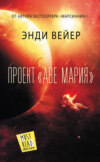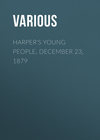Czytaj książkę: «Behind the News: Voices from Goa's Press»
Introduction
If you believe in miracles, here is a small one. An e-book, written collaboratively by over a dozen-and-half journalists, many with amazing stories to tell. Their willingness to do so, says something.
For one, it indicates a generosity to convert memories into history, which would otherwise have been consigned to the dustbin of amnesia. This is particularly true, as the media seldom writes critically about themselves in Goa. More importantly, it also suggests that there are many in Goa who have a story, and are willing to narrate it. If only they're given a chance. As mediapersons, we need to ask ourselves why these stories are not allowed (or encouraged) to surface in the first place. It's impossible to believe that there is such a drought of ideas and issues in Goa, and the general lack of debate in the media would make it seem.
October 10, 2003 marks the 20th anniversary of the Herald's English-language edition. Many of us journalists who contributed here are no longer, or perhaps never were, associated with that daily newspaper. But, the launch of this product undeniably opened up avenues for a generation of journalists in the state. In addition, it rewrote the rules of journalism for all of us here, for better or worse. Hence the choice of this date for the first release of this book.
What is being said along these e-pages refers to critical times in the history of post-1961 Goa. Needless to say, views voiced here stem from personal experiences, oftentimes are subjective, and likely to generate even more debate. But personal viewpoints are also important, in that these help to complete our understanding of particular events, episodes, and individuals. It is no coincidence perhaps that this series of essays is critical of some held up as icons of Goa's journalism over the past four decades. You might feel the criticism is unfair; but other versions do need to be heard.
This is, of course, not the last word on the subject. Nor does it claim to be a comprehensive account – what got included depended on who was willing to write their 'story' when the call for chapters went out.
This unusual work is humbly devoted to those who are not, or cannot, be with us, as we go down the corridors of time and look at the past decades. Journalists whom Goa has produced, but perhaps were never adequately recognised over the years. Like the innovative Ivan Fera, who died young along with the promise of immense talent and many bylines in journals like The Illustrated Weekly. Or, Norman Dantas, who's early death was at least in part triggered off by despair brought on by the unfair deal he got from journalism in Goa. We need to also remember the many who are not here with us, pushed out – both by limited opportunities, as also politics in the press – to migrate far and wide and earn a living on distant shores. To all of them, and the unsung heroes of journalism of the post-Liberation era, this e-book is devoted.
Chapter 1: Sixties' stories: Free Goa's first elections
By Ben Antao
Besides his stint referred to in this chapter, Benedito Martinho Herculano Antao (b, 1935) worked for the Indian Express in Bombay (1965-66). He then won a journalism award from the World Press Institute, moved to the US for a year's study, work and travel. Later, he spent 10 weeks at the Denver Post (1967), worked for a Catholic weekly in Toronto, and was a copy editor in the mid-seventies at a major Toronto daily. He also taught high school English, drama and religion for 22 years, before retiring in 1998, and qualified as a certified financial planner in 1988. Currently, he is involved in fiction writing, for which purpose he sees journalism as a "great training ground".
There is a truism in journalism that goes like this: facts are sacred; comment is free.
When I first read it in one of the books on journalism that I borrowed from the USIS library in Bombay in the late 'fifties, I was filled with such fervor as to consider the vocation in journalism that I was contemplating on, at the time, akin to the priesthood. The concept of 'freedom of the press' particularly attracted and engaged my young mind, burning with idealism to bring about genuine equality in Indian society and to see us as a truly "honorable people" as the Prime Minister Jawaharlal Nehru had said we were.
In other words, journalism would offer me a platform to make a difference.
After a season of doing freelance sports reporting for The Indian Express in the city now called Mumbai, I felt much like a lover. One who is not content with merely kissing but wants to explore the whole body. And as a follower of another truism, namely, he who seeks finds the way, lucky circumstance fell into my lap and I found myself doing freelance work for the Goan Tribune, a fortnightly published in Bombay to espouse the cause of Goa's political freedom from the Portuguese rule.
Here I got the opportunity not only to write about sports, but also to do general news reporting and profiles of prominent Goans. In little over a year, though, my budding love affair discovered a flaw in my inamorata – the lady fancied the use of hyperbole and propaganda as legitimate means to promote herself. My idealism received a jolt of reality when Lambert Mascarenhas, editor of the periodical then, engaged in propagandist campaigning, suggesting that such slanted writing was necessary to achieve the end. However, my burning desire to express myself in writing overruled my squeamishness.
After the Liberation of Goa in 1961, Lambert went to Goa and became joint editor of a new English-language daily, The Navhind Times, owned and published by the Dempo Brothers, who had become wealthy in the mining business. My fascination for the mistress of journalism remained still intact, not to mention the hidden agenda of my wanting to change the world.
So I went to Goa and joined the paper in June 1963.
Considering myself as a protege of Lambert, I enjoyed a special status at the paper, doing both reporting and sub-editing. It didn't take me long, though, to notice that Vassantrao Dempo, the elder brother, was keenly interested in the image of his newspaper and its editorials. He had hired two editors, a Catholic and a Hindu named T. V. Parvate from Maharashtra, ostensibly to give balance to the paper's news and views. Often at around 5:30 p.m., I would see Mr. Dempo carefully perusing the editorial that Lambert or Parvate had written before it came to the newsroom. The editors wrote on alternate days. I would know, for example, that Dempo had suggested a change in how a certain point of view was expressed in Lambert's editorial because Lambert often invited me to sit across his desk while he wrote an editorial that was based on my news report. Mr. Parvate, a fast and fluent writer, only occasionally asked me into his partitioned office to verify a fact or a figure.
Naturally, my curiosity propelled me to ask Lambert why it was necessary for him or Parvate to have their editorials okayed by the ultimate boss. After all, both of them were professionals who knew and understood the law of libel and defamation. Lambert, flashing his customary smile by way of indulging me, a novice in the game of politics, said it was a condition of his contract. Besides, what was the big deal? An editor could just as well express his own viewpoint as that of the owner. It wasn't a loss of freedom. We live and let live.
Reporters too
I thought about it and gradually came to the conclusion that reporters also indulged in self-censorship. Facts may appear to be sacred, but as a reporter I choose them to slant a 'story' in a particular way. Moreover, space in a newspaper is always limited, forcing me to write to a certain word count, in effect compelling me to sacrifice many 'facts'.
The above was true not only in Goa and Bombay where I worked as a general reporter for The Indian Express (1965-66) but also in Toronto where I worked as a copy editor on the foreign desk of The Globe and Mail in 1975-76. The foreign editor would throw at me reams of teletype copy from Reuters, Associated Press, Agence-France Presse, and The New York Times News Service on a current story, such as race riots in Johannesburg, or post-revolution democracy woes in Portugal or the Patty Hurst kidnapping by the Symbionese Liberation Army in San Francisco, and ask me for a 10-inch column story. This required that I cut out a lot of 'facts' from the 2000 words of wire copy and shape a news story in about 500 words.
Going back to Goa, I remember the one-sided coverage that Navhind Times carried during the month-long campaign for the historic, first general elections held on December 9, 1963. And I was part of it.
Now Vaikuntrao Dempo, younger brother of Vassantrao, was a Congress candidate in the Pernem constituency. The Dempo Brothers had made a substantial cash contribution to the national Congress Party, in effect buying a ticket for Vaikuntrao in the Goa elections. The local Goa Pradesh Congress Committee, headed by Purushottam Kakodkar, a freedom fighter and an apostle of Mahatma Gandhi, was deluged with names of suitable candidates. It was hard pressed to make a judicious choice, a key problem being the candidate's vision of the future of Goa.
At this time, after the 30-member Goa Legislative Consultative Council, headed by Maj.-Gen. Candeth, the mustachioed military governor, was dissolved and a writ for the first democratic elections was issued, two new political parties came into being and declared their election platforms. One was the United Goans, led by Dr. Jack de Sequeira, which stood for a separate state for Goa. The other was the Maharashtrawadi Gomantak Party, with Dayanand Bandodkar at its helm, which stood for Goa's merger with Maharashtra. The Congress, waffling in between, promised that Goans would be consulted about its future in the Indian union.
The elder Dempo let it be known that his paper would support the Congress in the elections and, therefore, all news coverage must be oriented towards Congress candidates. And as the chief reporter at the paper, it fell to my lot to deliver the news with this bias. On the campaign trail, I traveled the length and breadth of Goa, speaking to Congress candidates and often manufacturing 'news' that purported to show that people, by and large, were in favor of Congress candidates. Lambert and I even drove to Pernem one day to see how Vaikuntrao's campaign was coming along.
However, my one dependable contact was none other than the 50-year-old Purushottam Kakodkar. His office in Panjim was open to me at any hour of the day. Knowing that our paper was solidly behind him, he was generous with his time and forthcoming, giving me full access to campaign reports sent to head office from the various constituencies. During the campaign, Lal Bahadur Shastri, the Indian Home Minister, visited Goa to lend his support to the Congress candidates. Kakodkar arranged for me an exclusive interview with the minister. In the interview, Shastri affirmed that a separate status for Goa was on the cards. A day after my story appeared on the front page, Kakodkar told me that Shastri was pleased with my report and had asked him to extend his congratulations to me. I was more than touched by this solicitude. I was feeling giddy, riding on the carousel of a mutual admiration society.
My friend Ben Saldanha of PTI in Panjim filed a report based on my interview; so did Joshi of The Times of India bureau. As a representative of a news agency, Saldanha, of course, had to be objective and he was. As a matter of fact, he would often feed me stories about the other two parties, based on the 'inside' information he had received. He himself couldn't use that information for his news agency, but I could. And whenever I mentioned this 'fact' to my editors, I was told to just let it pass.
Now, as the campaign was getting into high gear, another friend L. S. Bhandare, an architect by profession, who represented UNI (United News of India) told me that the United Goans' campaign (workers dashing about in open trucks with loud music and handing out campaign literature) reminded him of elections in London, England. He too drew my attention to how successfully the UG party was appealing to the voters.
Convinced
But having persuaded myself willfully with auto-suggestion, and having been on a one-track crusade, I remained convinced that Congress would win the day. On the eve of the election, a day of pause in electioneering, I wrote an upbeat story (about three takes) and handed it to Mr. Salkhade, the news editor from Maharashtra. He scanned the intro and set it in the tray of stories for the front page. Then he looked up and said to me, "You know, Kakodkar is going to be the chief minister of Goa."
It was about 4 p.m. Something in the tone of his voice gave me pause. Then a wild notion entered my head, a spur-of-the-moment impulse, with no rhyme or reason, a mad folly that sometimes seizes lovers at play. I phoned Kakodkar.
"Hello, Purushottam." Although only 28, I was now on first-name basis with him.
"Hello Ben."
"It's a day of rest for you today. Is everything okay?"
"Fine."
"I've just finished writing my lead story for the paper tomorrow. Looks like Congress will win with an overwhelming majority. You must be pleased with the campaign. What do you think?"
"We have to wait and see," he said in a voice devoid of any emotion, but not exhausted. In this respect, Kakodkar came across as cool and circumspect, a man in full control of his emotions.
Mr. Salkhade was busy editing copy at the other end of the newsroom, beyond earshot. That wild notion came rushing again, prompting me to make the pitch, even if it was only hypothetical.
"Purushottam, can I ask you something?"
"Sure, of course."
"You know our paper has been very good to you and the Congress. And I, more than anybody else, have been responsible for all the publicity you've received. Soon you'll become the chief minister of Goa. Now I want to ask you: what will you do for me?"
A pause and, "What do you mean?"
"What I mean is, if you become the chief minister, can I be your press secretary?"
"I can't answer that."
"Why not?"
"I can't do it."
"Listen, I know you're not the chief minister yet. But in the event that you do become the chief minister, could you not at least tell me what your disposition will be?"
"No."
"You know, I can't believe you're saying this. I am not asking you for a job. I already have a job. All I am asking is, if you become the chief minister, what will you do for me? That's all."
"I can't do anything," he said.
"That's the answer I get after all that I have done for you? I am disappointed. Goodbye and good luck tomorrow."
"Thank you," he said and put the phone down first. I pictured him, in his customary white khadi bush shirt and pants, wearing a self-righteous expression on his face.
During this call, over the carriage of my Underwood typewriter, I was watching the news editor for my voice carried unusually far. But he was focused on his work and didn't look up in my direction.
I lit up a cigarette and hunched over the typewriter, dismayed beyond description. I had heard that Kakodkar was a highly principled man, and then with a sinking feeling in my gut, I realized I was being used, a means to the end. I shall never forget that moment.
Then I walked to my favorite bar to nurse my bruised ego.
Three days later, the election results came out. The Congress was wiped out without a single seat in Goa. The MG won 14 seats to the UG's 12, with two independents, plus an independent winning in Diu and a lone Congress victory in Daman.
I kept brooding about Kakodkar. Did he know something that I didn't? Was that why he said he couldn't do anything for me? I had no heart to ask him that. After that personal and private telephone conversation, the two of us carried on as if nothing had happened. And during the next year, my encounters with Kakodkar became strictly professional but cordial.
Echoes in Toronto
But the manipulation of news by newspaper proprietors was not limited to Goa. I heard a similar echo in Toronto in the nineties.
In the 1988 elections, the Progressive Conservative Party of Canada, led by Prime Minister Brian Mulroney, had won a second majority with 169 seats out of 295 in the House of Commons. The Liberals were in opposition with 83. In the ensuing five years, the Mulroney government brought in a new bill called Goods and Services Tax, a highly controversial measure that proved unpopular with the majority of Canadians. Still, the government went ahead and passed the tax bill – a 7% tax on all goods and services effective January 1990. During this term, Mr. Mulroney was also criticized for being too friendly with the Americans.
In the 1993 election, the public was fed up with the Tories (PC) as reflected in the opinion polls. But the press and media had no clear idea as to how deeply the people loathed the policies of the Tories. The shocker came on the night of the election-October 25. The fall from grace for the Tories was as stunning as it was deserved. They won only two seats in total, each in the province of New Brunswick and Quebec. The Liberals, led by Jean Chretien, returned with a huge majority of 177 seats. The Liberals are still in power, having won the next two elections in 1997 and 2000.
However, an interesting development regarding the power of the press took place in 1998. A wealthy Canadian newspaper mogul named Conrad Black financed a new daily in Toronto called The National Post. Black told readers that his paper would advance an alternative point of view, a far right conservative position on politics in Canada. As owner of London's Daily Telegraph, the Jerusalem Post, and Chicago's Sun-Times, Mr. Black hired top talent and spared no expense, at least for the first two years, to make the Post successful in creating and wooing the conservative voice in Canada. In the 2000 election, his paper became as one-sided as Navhind Times was in 1963. The paper supported a new party called Canadian Alliance, a highly conservative group drawn mostly from western Canada, and was hell-bent to destroy Prime Minister Jean Chretien and the Liberals. Alas, the people didn't buy it! And the Liberals forged ahead with a third majority win.
During this time, Mr. Black's personal agenda of wanting to be a peer in the House of Lords in England came out front and centre. The British Prime Minister Tony Blair recommended and the Queen accepted that Conrad Black be made a Lord. But sweet revenge raised its arms and Jean Chretien said Black couldn't be a Lord while being a Canadian citizen. Black was forced to renounce his Canadian citizenship. Not only that, but Black sold the National Post in 2001 for a tidy profit. He is now Lord Black of Crossharbour in the House of Lords.
I started this article with the observation that facts are sacred and comment is free. Both elements of journalism, it seems to me, are flawed. Like beauty and sex, freedom of the press is in the eye of the beholder and in the loins of the performer. It's all relative, never absolute.
Chapter 2: Goan journalism: Views from near and far
Eugene Correia
Canada-based Eugene Correia has worked for a wide range of national-level newspapers published in India. Besides those listed below, he has also written for India Today, and a number of expat Indian publications published from overseas. What stands out is this journalist's sharp understanding of Goan issues and politics, and his memory for detail, all the more remarkable since he has been based outside Goa for virtually his entire working life.
I must admit I have no direct connection with journalism in Goa, in the sense of having worked in the state. However, I was involved in Goan journalism in Mumbai (then Bombay), but that too in a limited way. I wrote few pieces for the Konkani-language papers such as The Goa Times and Ave Maria and the English-Konkani weekly, The Goan Sports Weekly. After Goa's Liberation, and till I left India for Canada in late 1981, I took more than a cursory look at how journalism is practiced in Goa. I read The Navhind Times often, as the paper was available in Mumbai during the 1970s.
I was involved in mainstream journalism in Mumbai since my college days, first with The Indian Express and later with the Free Press Journal. I provided freelance services for both papers in the sports department. It was my dad's cousin, Felix Valois Rodrigues, who inspired me to take up journalism. A versatile writer in English, Konkani and Portuguese, he worked for the Indian Express in New Delhi till his retirement.




















